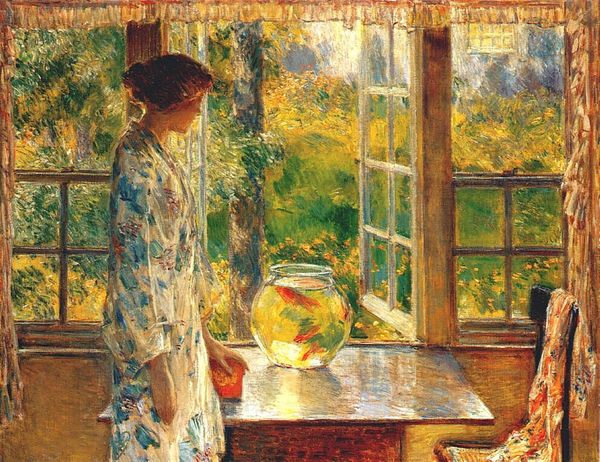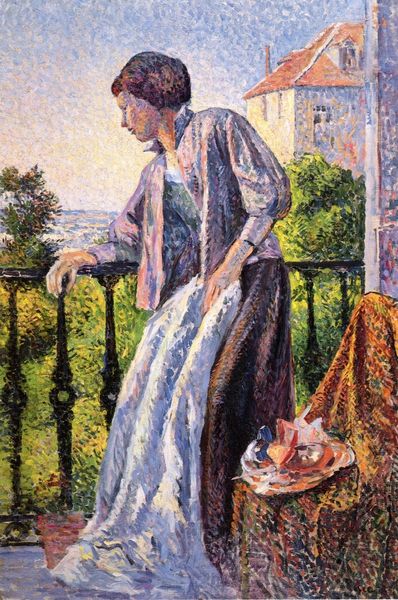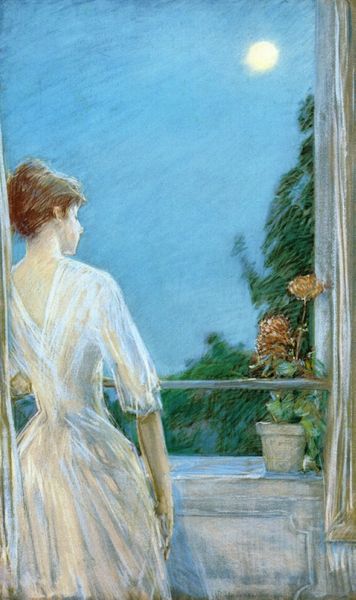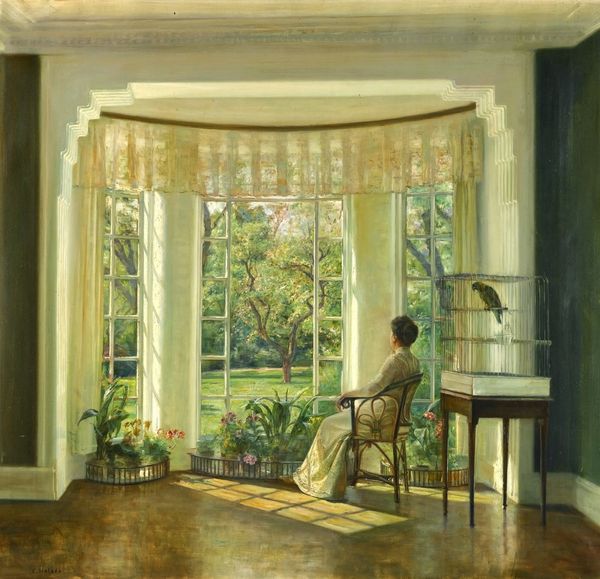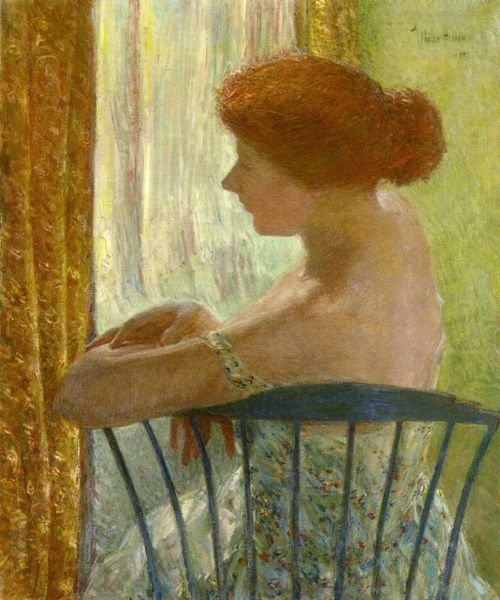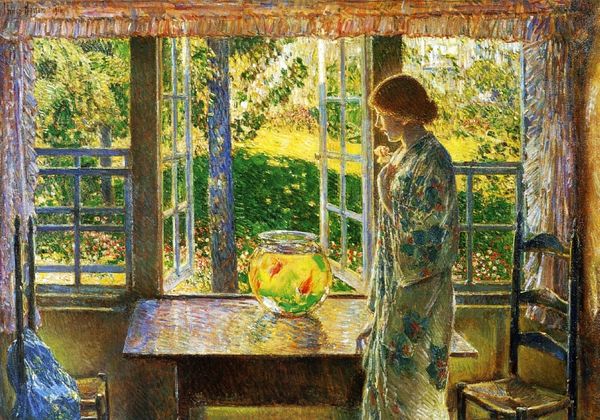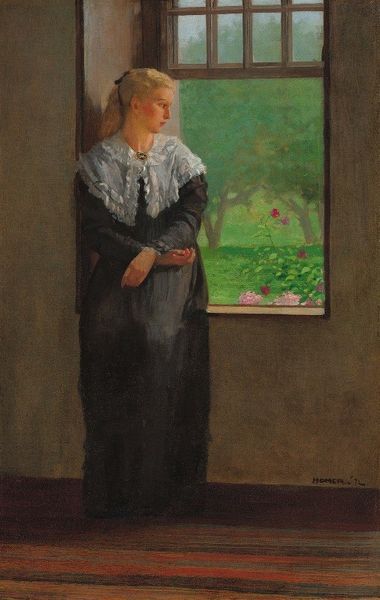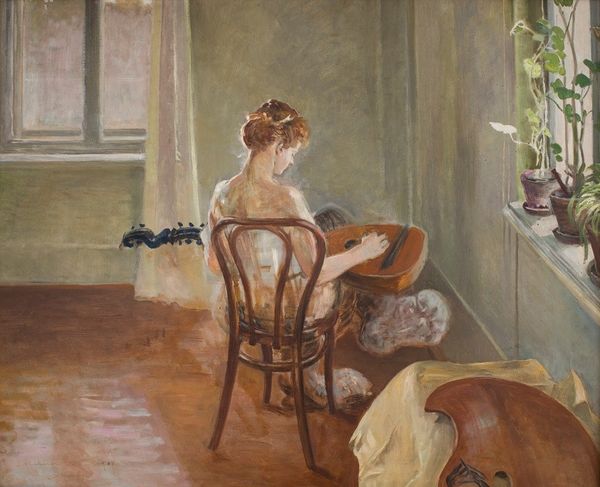
#
oil painting
#
portrait reference
#
acrylic on canvas
#
animal portrait
#
animal drawing portrait
#
portrait drawing
#
facial portrait
#
portrait art
#
fine art portrait
#
digital portrait
Copyright: Public domain
Curator: This is "Child in Window" painted in 1891 by Lilla Cabot Perry, who was, notably, a key figure in introducing Impressionism to American audiences. What's your initial impression? Editor: It feels like a very private moment. The girl's isolation is almost palpable; a quiet contemplation on the cusp of... something. A dream perhaps. Or perhaps just boredom. Curator: Isolation definitely resonates here. The window itself acts as a frame within a frame, literally separating her from the vibrant world outside. I see layers upon layers. Windows represent boundaries, opportunities, and imprisonment, right? Which reading grabs you first? Editor: Imprisonment isn’t where I initially landed, but it's interesting that you mention that. Windows as symbols of hope and possibility are certainly more common. But you’re right, the bars formed by the window frame introduce a certain tension, a feeling of being enclosed. Is it a gilded cage or just a temporary pause? Curator: Ah, a delicious question! Cabot Perry's brushwork is quite masterful, blurring the lines of clarity, particularly between the girl's inner world and the external landscape. Note how the verdant tones of the outside landscape, although beautiful, don't quite permeate the internal space she occupies. She’s bathed in a different kind of light. Editor: That internal light…it's like a whisper of nostalgia. Childhood often becomes associated with such intense nostalgia, viewed through a dreamy lens as if remembered from a distance. It's the way the world looked from inside the safety of a protected space. It's how you see something while safely separated from it. Curator: You know, this discussion makes me appreciate how art speaks across time, transforming from a reflection of its era into a personal reflection of our own experiences. The picture embodies youth's quiet intensity so that its allure is as present today as it was in 1891. Editor: Exactly. It transcends its immediate subject and setting to become a mirror reflecting universal experiences of transition, anticipation, and the bittersweet nature of observation. What we find often changes as much as we ourselves evolve.
Comments
No comments
Be the first to comment and join the conversation on the ultimate creative platform.

